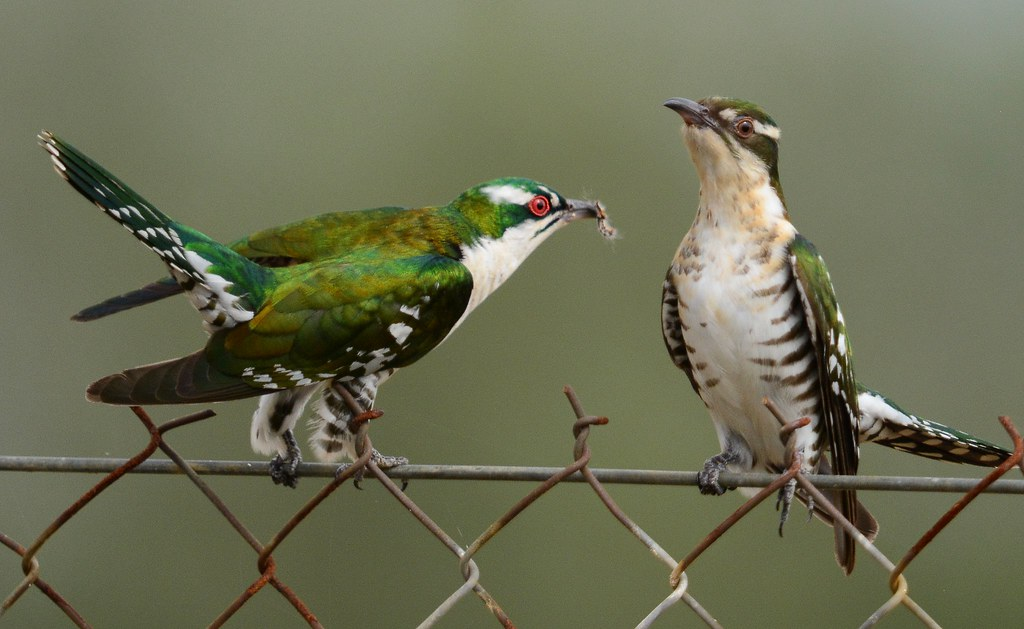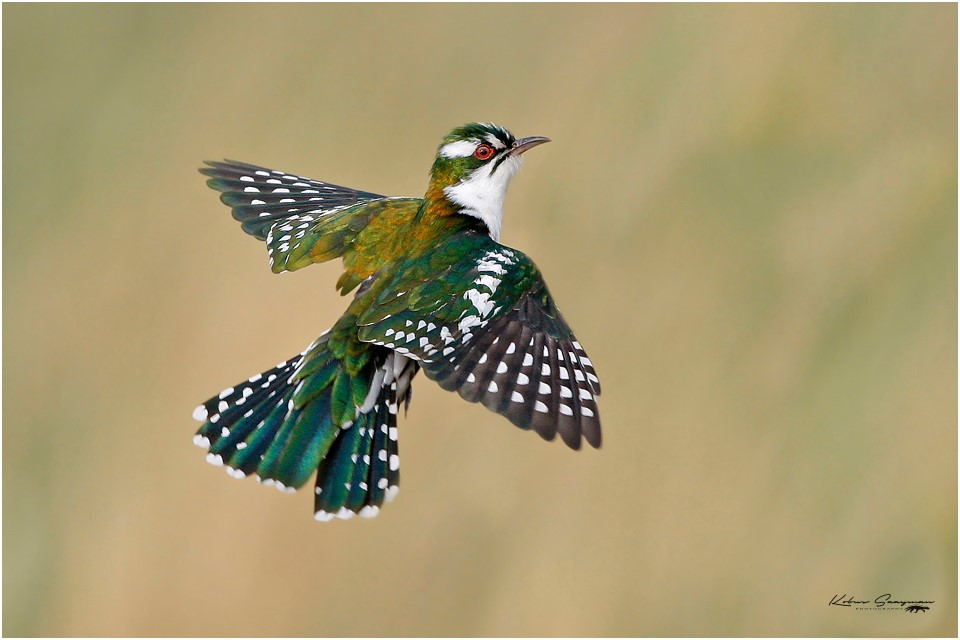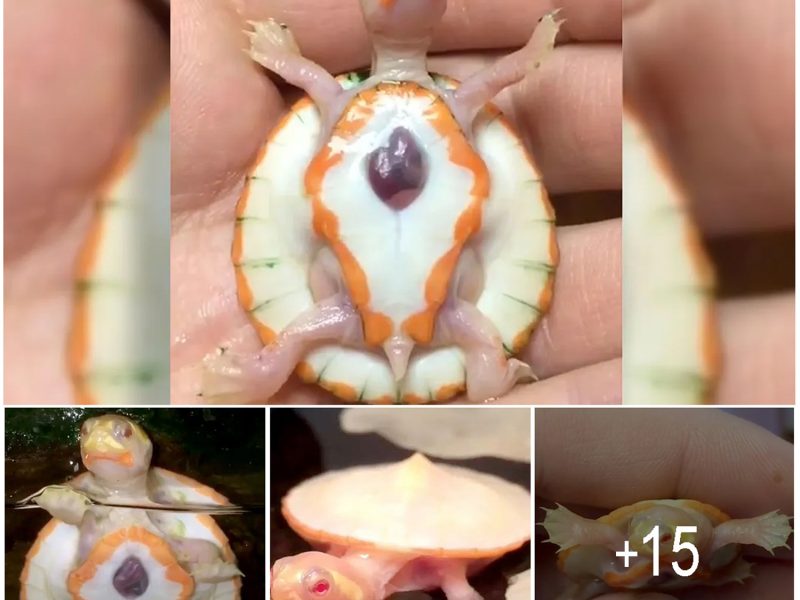It is a smallish, greenish cuckoo, with a booming, piercing, and distinctive “deee-deee-deee-dederik” call, in which it got its name. Males have white stipples on the wings, streaked flanks, and red eyes accentuated by a red eyering. Meanwhile, coppery-green females, have a white smear in front of their eyes, and white marks on the wings. It occurs in much of sub-Saharan Africa, and a smaller range in south Arabia, preferring semi-arid areas, close to its brood-parasite hosts, the bishops and the weavers.
Read further to know more about the Diederik Cuckoo.

What is a Diederik Cuckoo?
Diederik Cuckoo (Chrysococcyx caprius), formerly called the didric cuckoo or the dideric cuckoo, is bird species belonging to the family Cuculidae, from the order Cuculiformes, which also includes the anis and roadrunners. Its subfamily, Cuculinae, comprises parasitic cuckoos from the Old World. The name “diederik” resembles the loud, high-pitched call made by the territorial males from the species.
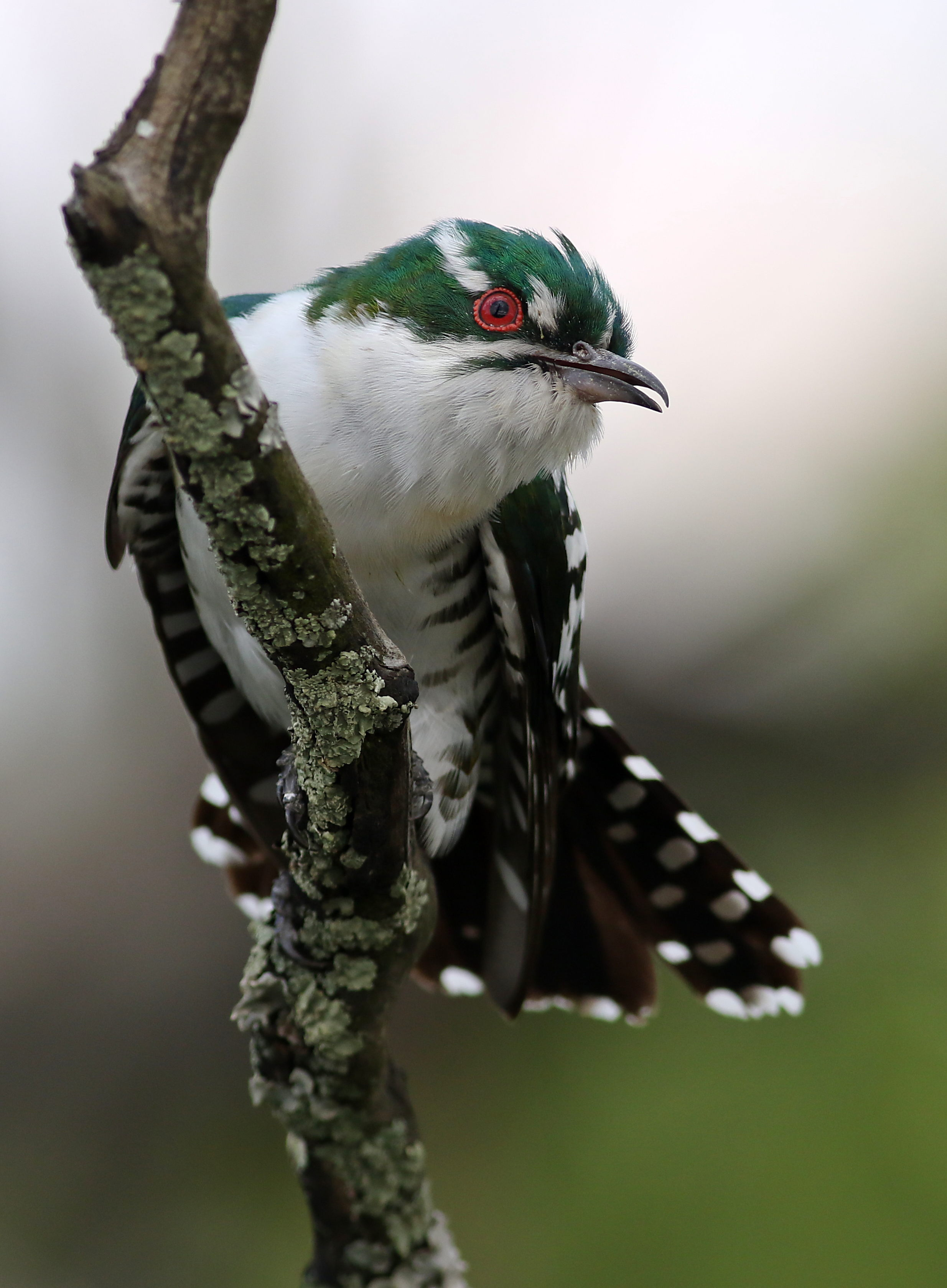
Its seven levels of classification are as follows:
Kingdom: Animalia
Phylum: Chordata
Class: Aves
Order: Cuculiformes
Family: Cuculidae
Genus: Chrysococcyx
Species: C. caprius
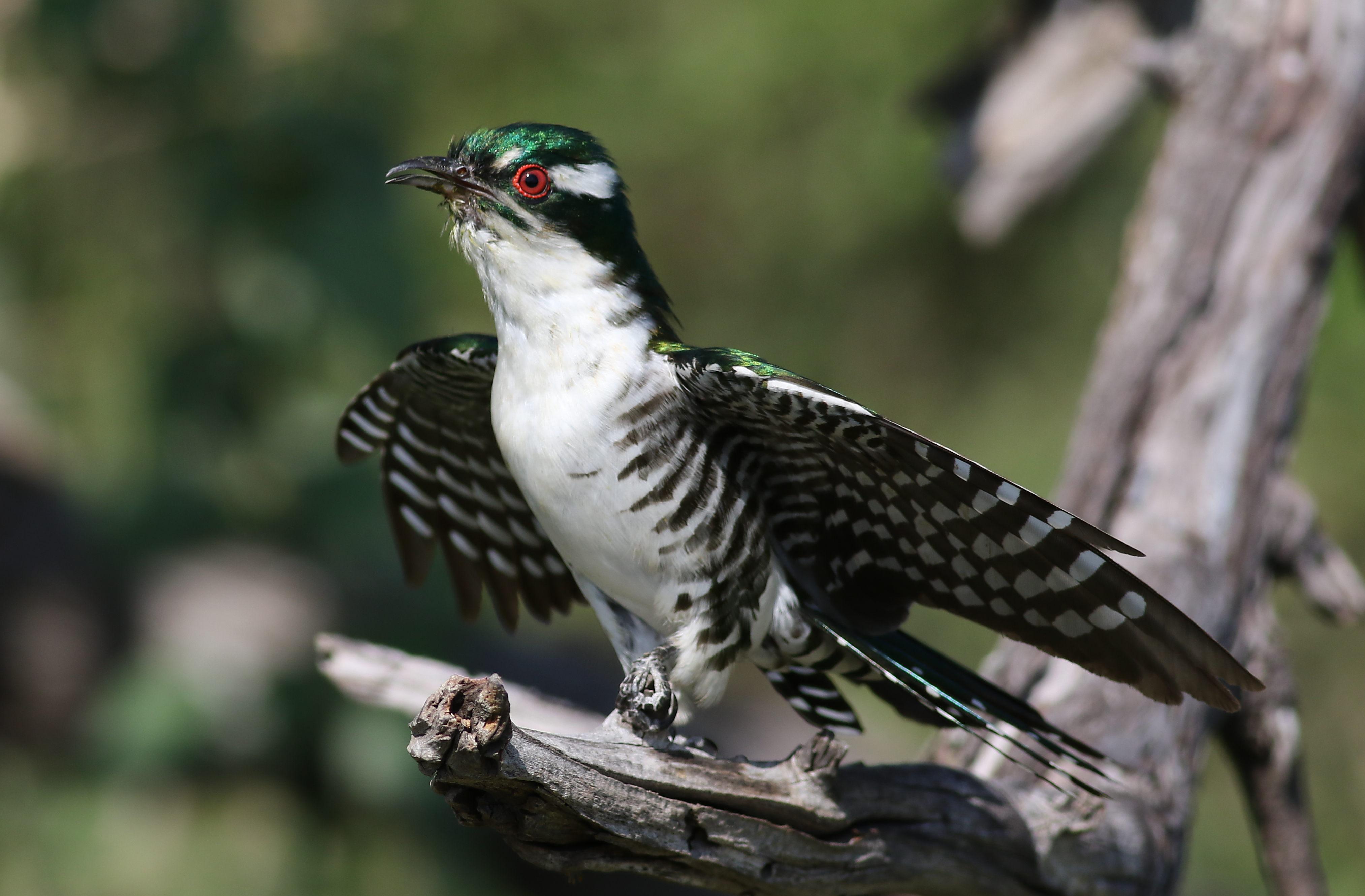
Diederik Cuckoo Physical Description

Diederik Cuckoo is a small cuckoo species, growing 7.08 to 7.87 inches or 18-20 centimeters and weighing around 30 to 32 grams. The adult males sport greenish upperparts, with a bronzy gleam on the back. White spot rows occur on the wing tetrices, still observable even on tucked wings. Meanwhile, underparts, throat, and chin are white. Flanks and breast sides are bronzy-brown streaked. Outer rectrices of the tail are green, with few white bars.
The head is green, with white flecklings appearing on the crown. Its white supercilium stands out and stretches from the lores to the ear tetrices. However, it may have a gap above the eyes. A thin, greenish cheekbone stripe is conspicuous on its white cheeks. Eyes are red, accentuated by red eyering. The bill is dark, while legs and feet are gray.
On the other hand, females have duller plumage, but a more prominent bronzy luster on the back. Throat and chin appear to be brownish while the breast has some subtle bars. Buff spots occur on the wings and tail. Eyes can vary from brown to gray, surrounded by a brown eyering. Juveniles and immature birds are similar to the female, with paler green to bright reddish-brown upperparts.
Where can they be spotted?
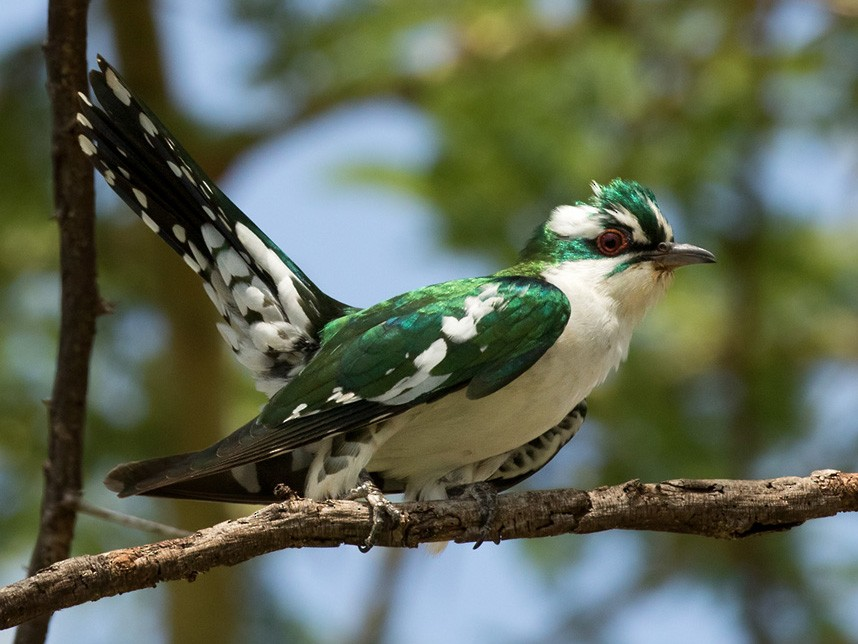
Diederik Cuckoos occur in sub-Saharan Africa and southern Arabia. It is an intra-African migrant and may perform necessary movements associated with the rains. It prefers semi-arid habitats, such as savannas, open woodlands, grasslands, marsh edges, and rarely, in suburban gardens, close to its brood-parasite hosts, the bishops, and the weavers.
Interesting Facts You Should Know About the Diederik Cuckoo
Diederik Cuckoos feed primarily on caterpillars and insects, such as beetles, grasshoppers, and termites. Occasionally, it may take seeds, and consume the eggs of its brood-parasite hosts. They singly forage on trees and bushes, gleaning prey from the stems and leaves of the plants, and sometimes going down to the ground to pick food.
A distinct type of courtship feeding happens between these birds. The male will sing to the female to attract her and then hunts her a caterpillar as a gift. Afterward, the pair performs a dance display, characterized by bobbing their slightly stretched wings in an upward and downward motion. The male will offer the caterpillar, and if she accepts the male, the pair will hold each other end of the food item.
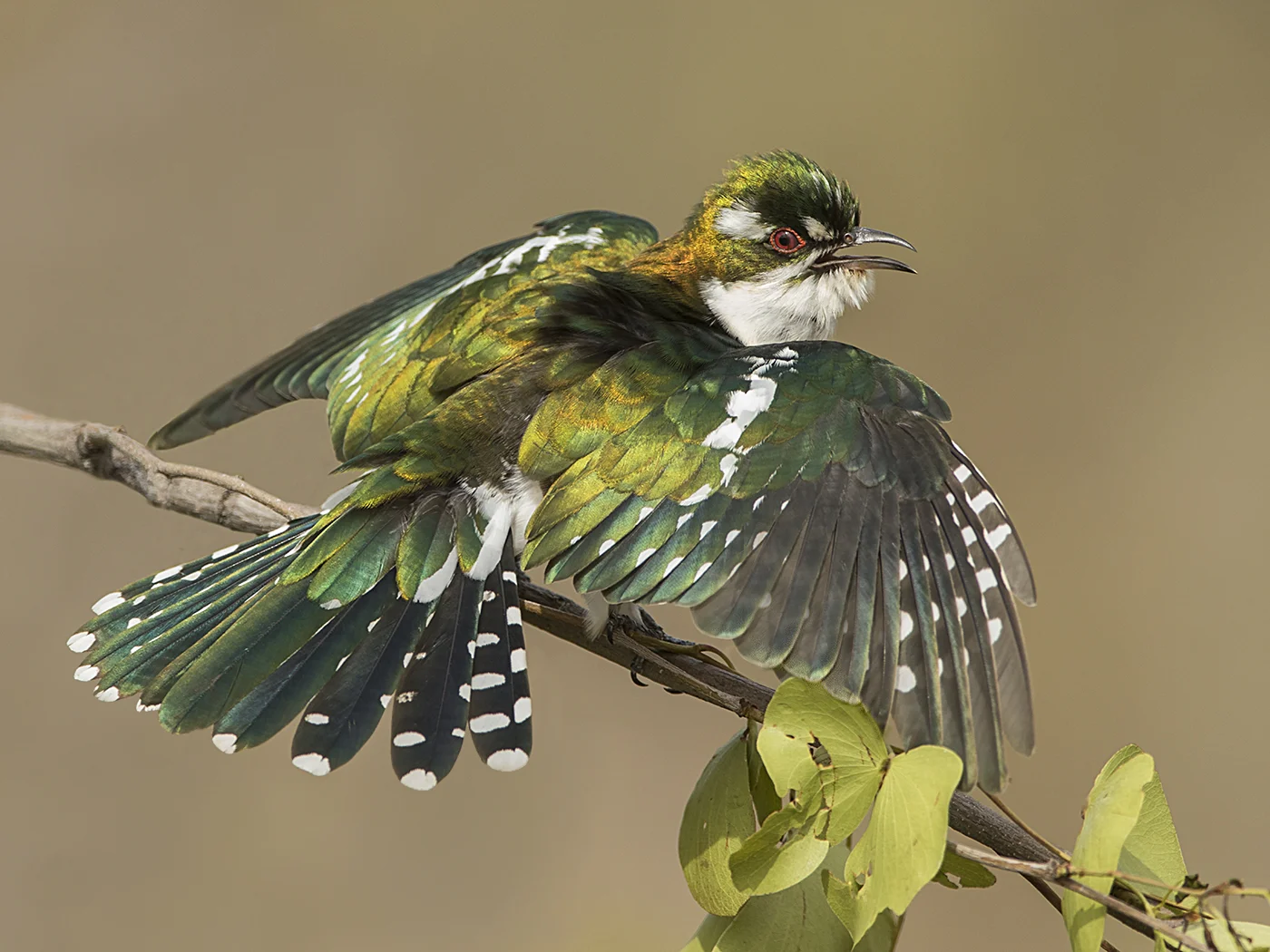
Breeding season is linked to the wet season, though, the egg-laying period may vary depending on the range. Diederik cuckoo is a brood parasite, which means they rely on other birds to raise their young. Common hosts are bishops, weavers, and sparrows.
The female will visit a host nest, and then destroy any eggs or kill any broods prior to laying her own egg. When spotted, she is often pursued or mobbed by the host species. Most of the time, the hosts are not wary of the parasite’s egg.
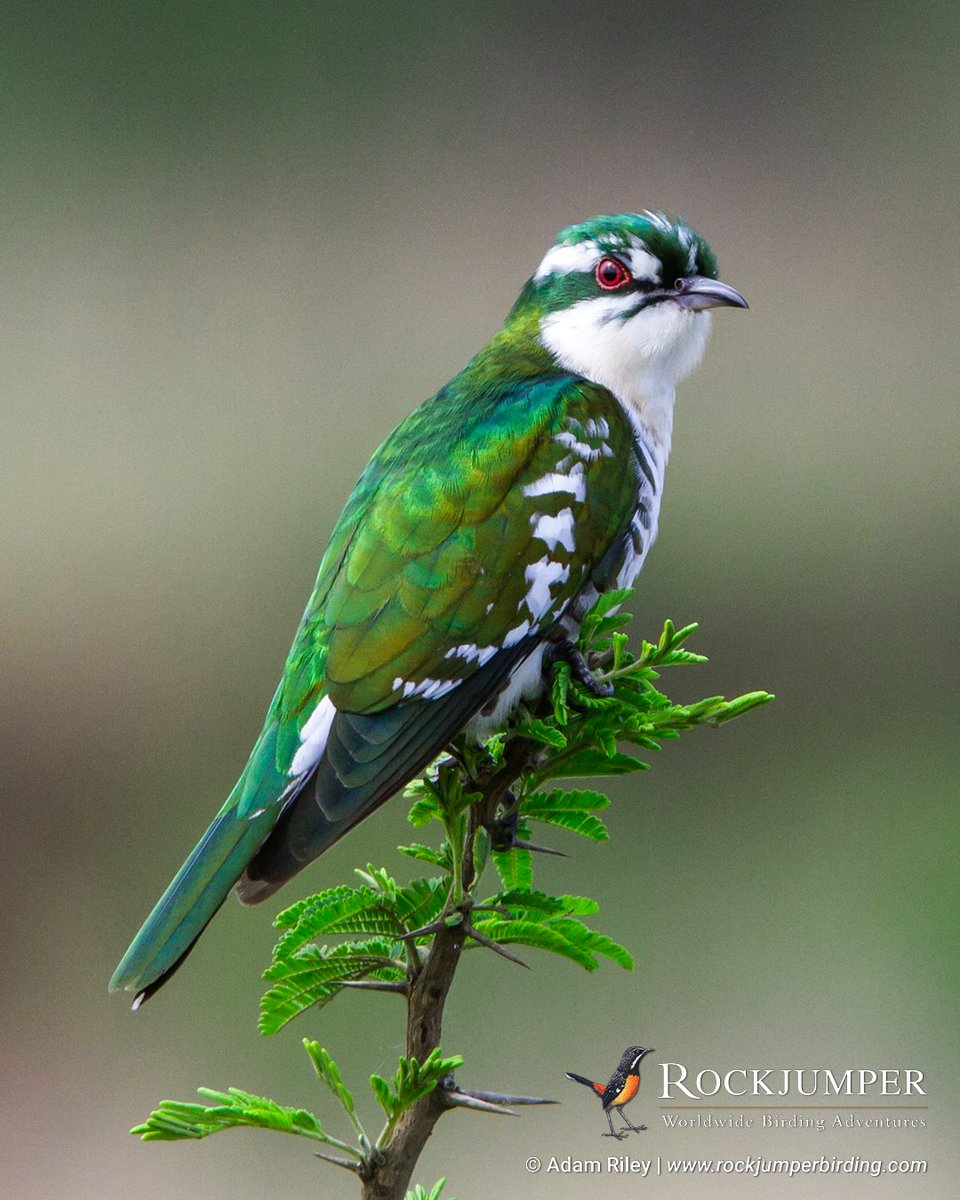
The incubation period will last about 12 days. After hatching, the cuckoo brood will destroy the hosts’ eggs or chicks. The cuckoo brood will stay in the nest approximately 22 days, but will still rely on its host parents for another three weeks.
Diederik Cuckoos’ population size appears to be stable, and they are common throughout their range. The species is currently evaluated as Least Concern (LC) under the IUCN Red List of Threatened Species.
